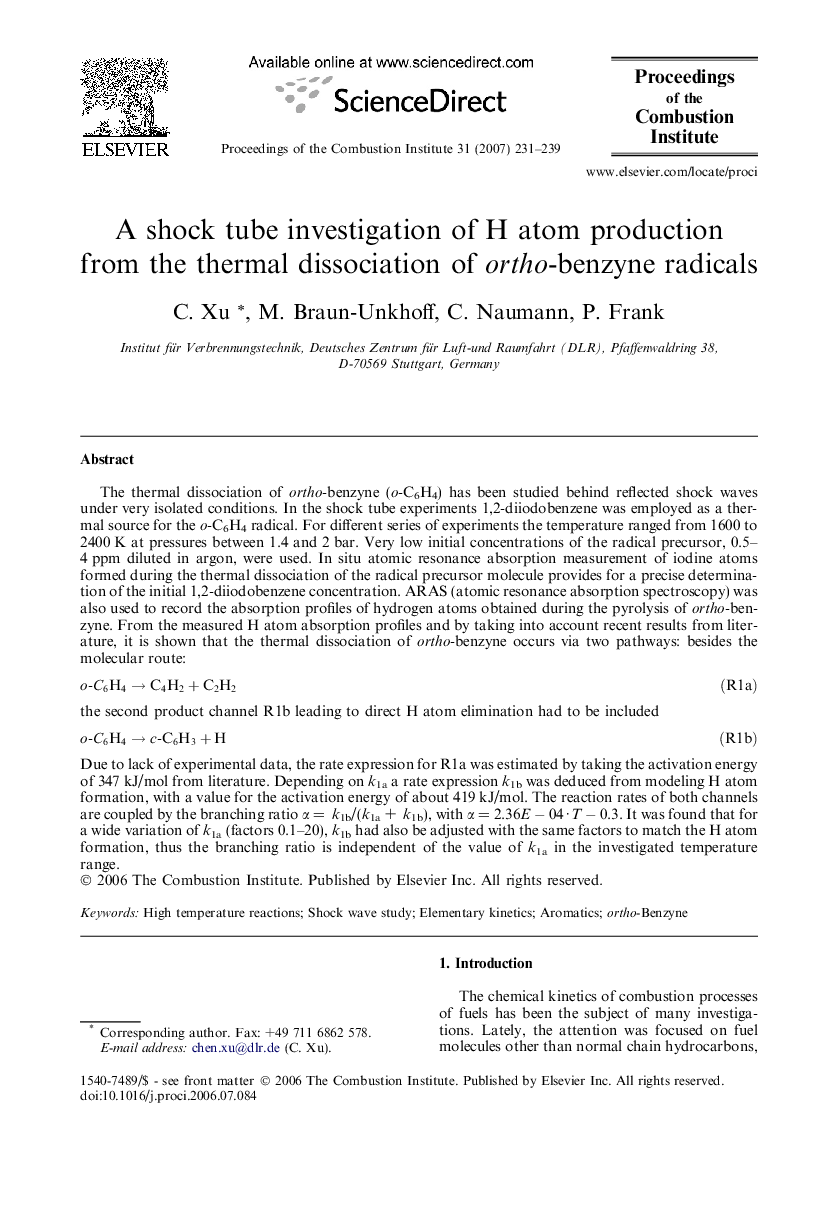| کد مقاله | کد نشریه | سال انتشار | مقاله انگلیسی | نسخه تمام متن |
|---|---|---|---|---|
| 240725 | 1427929 | 2007 | 9 صفحه PDF | دانلود رایگان |

The thermal dissociation of ortho-benzyne (o-C6H4) has been studied behind reflected shock waves under very isolated conditions. In the shock tube experiments 1,2-diiodobenzene was employed as a thermal source for the o-C6H4 radical. For different series of experiments the temperature ranged from 1600 to 2400 K at pressures between 1.4 and 2 bar. Very low initial concentrations of the radical precursor, 0.5–4 ppm diluted in argon, were used. In situ atomic resonance absorption measurement of iodine atoms formed during the thermal dissociation of the radical precursor molecule provides for a precise determination of the initial 1,2-diiodobenzene concentration. ARAS (atomic resonance absorption spectroscopy) was also used to record the absorption profiles of hydrogen atoms obtained during the pyrolysis of ortho-benzyne. From the measured H atom absorption profiles and by taking into account recent results from literature, it is shown that the thermal dissociation of ortho-benzyne occurs via two pathways: besides the molecular route:equation(R1a)o-C6H4→C4H2+C2H2o-C6H4→C4H2+C2H2the second product channel R1b leading to direct H atom elimination had to be includedequation(R1b)o-C6H4→c-C6H3+Ho-C6H4→c-C6H3+HDue to lack of experimental data, the rate expression for R1a was estimated by taking the activation energy of 347 kJ/mol from literature. Depending on k1a a rate expression k1b was deduced from modeling H atom formation, with a value for the activation energy of about 419 kJ/mol. The reaction rates of both channels are coupled by the branching ratio α = k1b/(k1a + k1b), with α = 2.36E − 04 · T − 0.3. It was found that for a wide variation of k1a (factors 0.1–20), k1b had also be adjusted with the same factors to match the H atom formation, thus the branching ratio is independent of the value of k1a in the investigated temperature range.
Journal: Proceedings of the Combustion Institute - Volume 31, Issue 1, January 2007, Pages 231–239